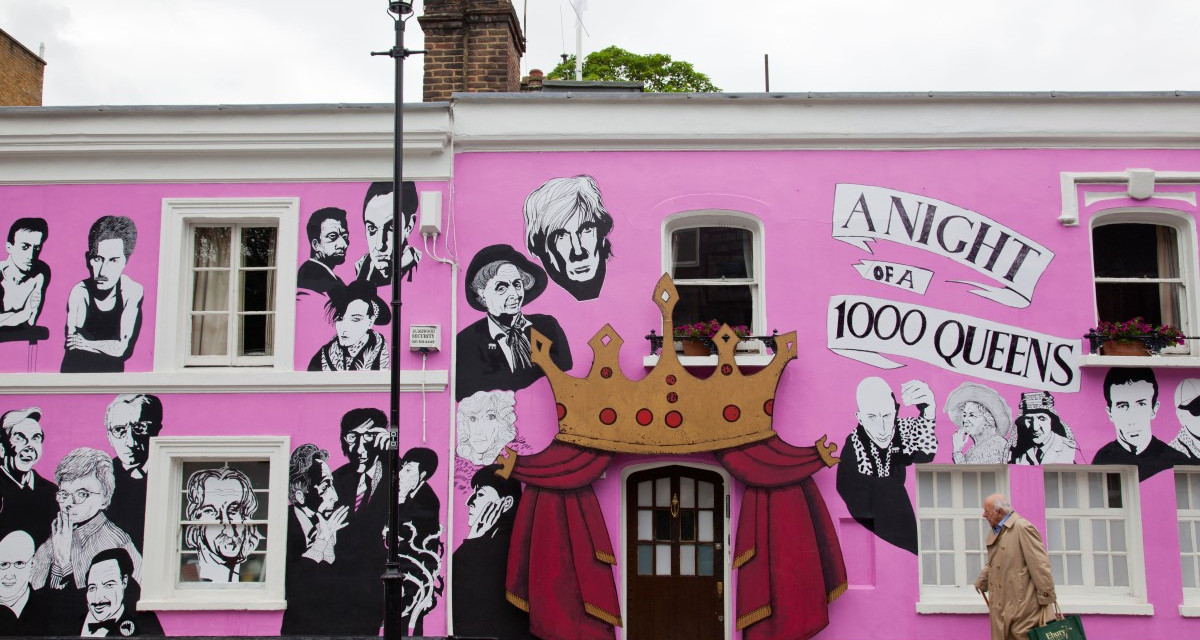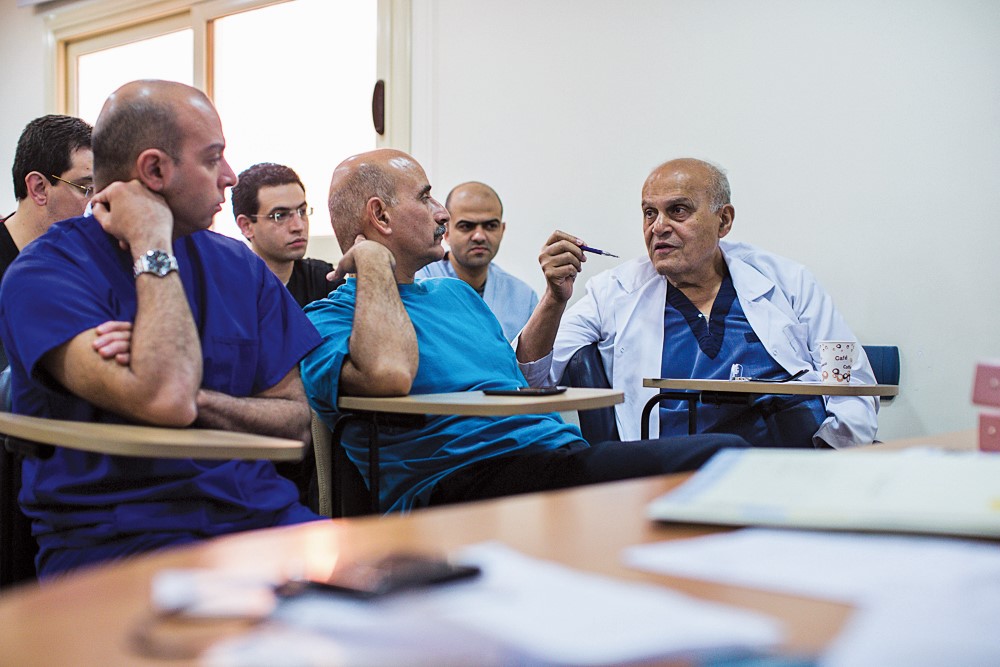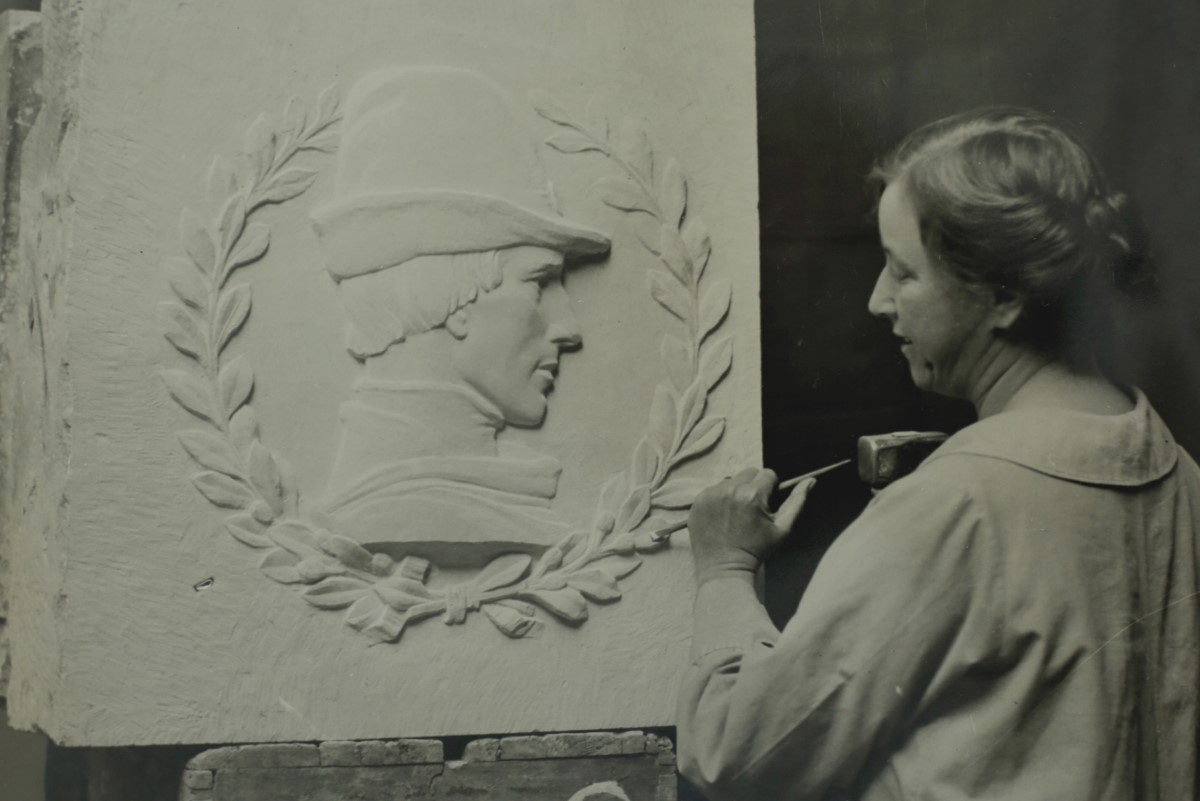From Oscar Wilde to Quentin Arisp, Alice Cairns explores Chelsea’s place in LGBTQ+ history
With its reputation as a bohemian enclave, a creative quarter and a home to artists and eccentrics, it’s little wonder that Chelsea has had a role to play in queer history. Take a stroll through its streets and you’re bound to find an address where lesbian, gay and bisexual residents played out dramas of defiance, liberation and love, creating communities and forging relationships in the face of discrimination.
Perhaps the most famous of Chelsea’s LGBT residents was Oscar Wilde, the writer and wit who lived at 16 (now 34) Tite Street. It was here in Chelsea’s fashionable artists’ quarter that Wilde lived with his wife and his two sons, entertaining the likes of WB Yeats, Ellen Terry, the Prince of Wales and Lillie Langtry – as well as his lover, Lord Alfred Douglas.
It was also at Tite Street that the Marquess of Queensberry, Lord Alfred’s father, made an unannounced visit to accuse Wilde of corrupting his son. Wilde, who had been the toast of London after the triumphant premieres of The Importance of Being Earnest and An Ideal Husband in January and February of 1895, decided to sue the Marquess for libel – a disastrous course of action that resulted in his arrest for “gross indecency” in April of that year.
This climactic moment took place at another Chelsea address: the Cadogan Hotel on Sloane Street. Concerned friends begged Wilde to escape to France, where attitudes to homosexuality were more lenient, but he refused. After learning his arrest was imminent, Wilde is reported to have turned very grey, but to have insisted that “I shall stay and do my sentence, whatever it is.” At 10 past six on April 6, a waiter followed by two detectives entered Wilde’s bedroom, where a half-packed suitcase lay on the bed, and took him to Bow Street. A bankruptcy sale of Wilde’s possessions took place at his Tite Street home a few weeks later, in which his treasure trove of books, artworks, furniture and personal letters were put up for sale – raising a sum that was still insufficient to pay off his debts.
While Oscar Wilde’s story ended in tragedy, a number of his contemporaries were able to live lives of quiet contentment. Artists Charles Shannon and Charles Ricketts lived together for 50 years – spending 1888-94 at 2 The Vale, King’s Road. Although they never publicly identified as gay, there’s no doubt that they dedicated their lives to one another from the moment they met at art school. They worked in adjoining studios and collected art together, with Ricketts taking on commercial work as an illustrator to support Shannon’s career as a painter.
During their time together, Shannon sometimes engaged in relationships with women, and Ricketts wrote diary entries confiding his fears that his companion would marry. However, the couple continued to cohabit until Ricketts’ death in 1931, and were steadfast friends to Oscar Wilde, visiting him in prison and assisting him financially after his release.
Another contemporary of Wilde was Bram Stoker, author of Dracula. He lived at several addresses in Chelsea, including 27 Cheyne Walk and 18 St Leonard’s Terrace. Stoker was not openly gay, but his life has invited speculation from scholars. His marriage to Florence Balcombe – whose former suitor was none other than Oscar Wilde – was rumoured to be sexless, and at the age of 24, Stoker wrote to Walt Whitman calling him a “wife to my soul”. Parts of Dracula were written during Oscar Wilde’s trial, and many literary scholars have identified currents f homoeroticism in the novel, centring around the sexually ambiguous figure of the bloodsucking Count.
One Chelsea resident whose sexuality was far from ambiguous was artist’s model Quentin Crisp. Despite enduring abuse and regular beatings, Crisp was openly gay, wearing makeup, dyeing his hair and dressing flamboyantly in the 1930s and beyond. In 1940 he moved to a flat at 129 Beaufort Street in Chelsea, where he lived for 41 years. A notoriously indifferent housekeeper, Crisp claimed “there is no need to do any housework. After four years, the dirt doesn’t get any worse.”
Crisp was ostracised for his refusal to hide his sexuality – but even in the 40s and 50s, there were some spaces where those in he know could express themselves without fear of persecution. The Gigolo club at 328 King’s Road was frequented by gay men, while behind a green door at 239 King’s Road was Gateways, a women-only club that became a thriving hotspot for lesbians and bisexuals. Visitors required a code to enter, and were expected to adhere to rigid rules – including identifying as either “butch” (with Brylcreemed hair and a shirt and tie), or “femme” (skirts and blouses).
As the 70s and 80s progressed and Gateways’ clientele became more emancipated and politically conscious, Gina Cerrato, who owned the club with her husband Ted, insisted that all clients leave their politics at the door to prevent heated debates about feminism and the newly founded Gay Liberation Front. It was also Gina who refused Rolling Stones frontman Mick Jagger entry to the club – even when he offered to wear a dress. By the time Gateways closed in 1985 it had become the world’s longest-running lesbian club.
Today, Chelsea is home to residents of all sexualities and gender identities. Football fans can join Chelsea Pride, Chelsea FC’s official LGBTQ+ supporters’ group, while in 2012 the Chelsea Arts Club decorated its facade with murals of Quentin Crisp, Oscar Wilde and more for its Night of a Thousand Queens ball. Even Chelsea Physic Garden recently held a tour inspired by queer botany, exploring same-sex reproduction in nature. It’s a culture of acceptance and equality that wouldn’t have been possible without Chelsea’s queer pioneers.








